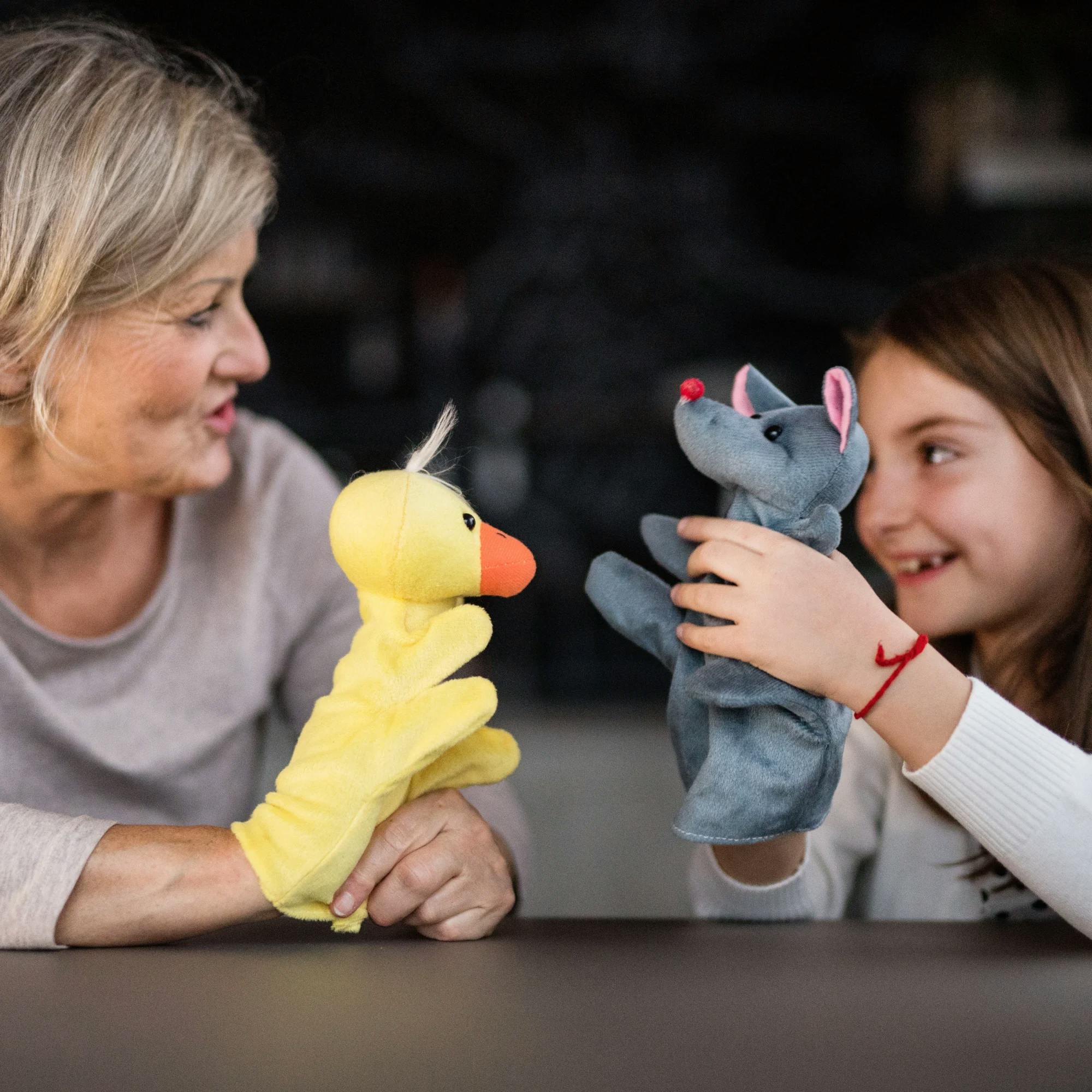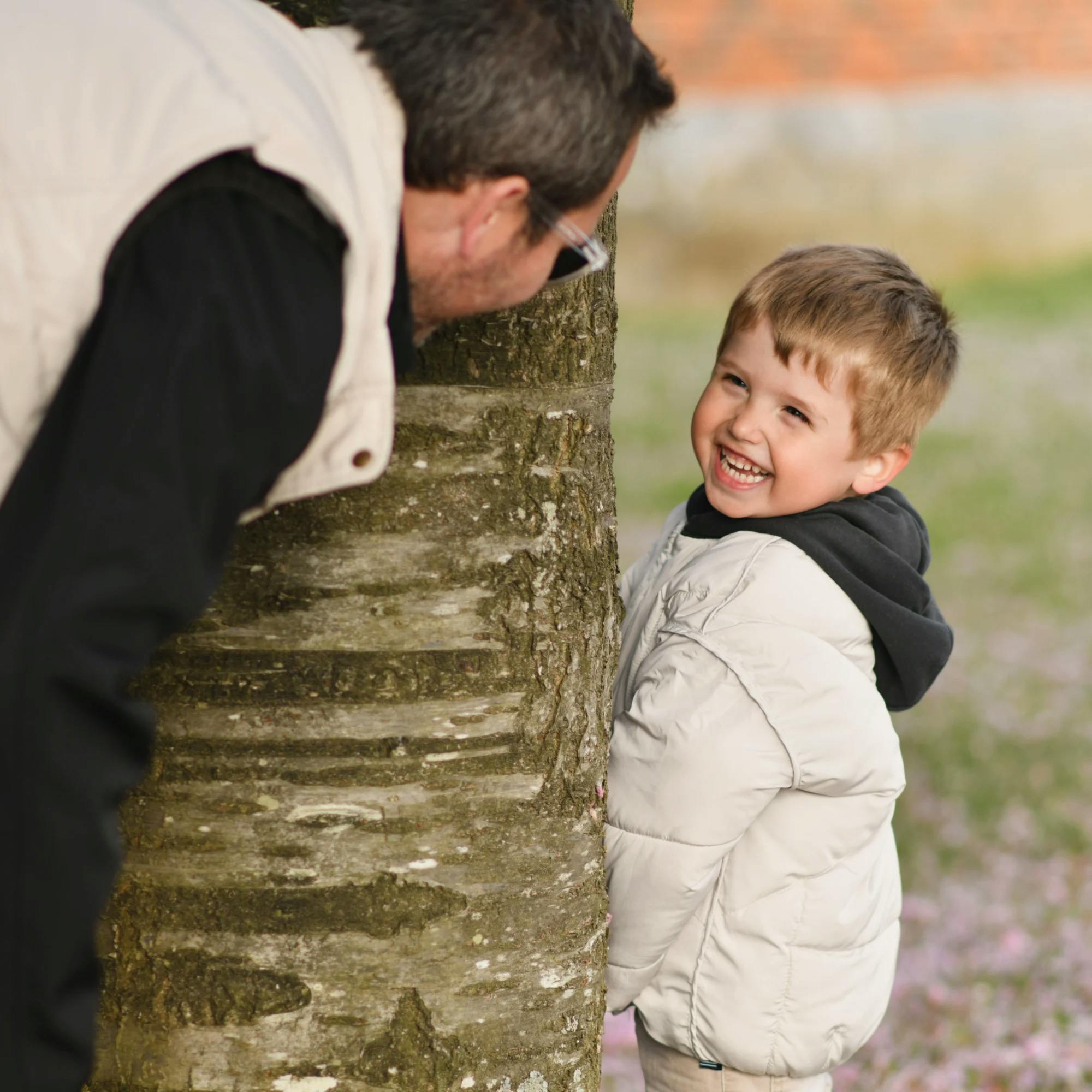Reading with your child is a wonderful way to bond and support their language development. If your little one is learning the “th” sound, there are many engaging books that can help them work on these sounds while enjoying quality time with you.
The two types of “th” sounds
First, it’s important to know there are two distinct types of "th" sounds:
The voiceless "th" sound, as in "thick”
The voiced "th" sound, as in "then”
Say both words out loud and you'll notice the difference: "thick" has more air during the "th" sound, while "then" has less. Why is this? When we say the voiceless "th," our vocal folds do not vibrate. However, with the voiced "th," our vocal cords vibrate, causing the less breathy sound you hear.
You can actually feel the difference with your hand. Try saying "thick" and "then" again, but this time place your hand on your throat. You'll feel your vocal folds vibrating when you say "then."
The use of vocal folds is the only difference between these two “th” sounds. Both sounds involve the tongue protruding slightly through the top and bottom front teeth.


Try practicing the “th” sound with these children’s books
When it comes to learning speech sounds, daily practice will ensure your child makes the most progress–and reading together is an easy way to get that practice done!
Here, we’re sharing a list of children’s books that use the “th” sound in fun and imaginative ways, including our speech therapists' favorite recommendations. Your child can read aloud or repeat the “th” words after you say them. You can even turn it into a game by asking them to clap or raise their hand every time they hear a word with “th.”
You can turn it into a game by asking your child to clap or raise their hand when they hear a “th” word.
In addition to practicing speech sounds, when you read aloud and talk with your child about the stories, you'll be giving them a valuable opportunity to grow their general language skills.
If you don’t own the recommended books, you don’t have to buy them! Check your local library, or search for a read-aloud version on YouTube. Let’s dive in and discover some great books to read with your child!
Find the right speech therapist for your child
We'll match you with a licensed speech therapist who's experienced in your child's needs and available when you are.
 Get started
Get started1. Goodnight Moon
Cuddle up with this well-loved story and get in some speech practice before bed. The repetitive language gives your child plenty of opportunities to practice the words “the,” “there,” and “three.”
2. Birthday Monsters
If your child is working on “th,” this one is perfect for them! Birthday Monsters includes plenty of practice words: birthday, they, they’ve, they’re, the, thrill, there’s, nothing, that, then, and things.
3. The Cat in the Hat
This classic Dr. Seuss book offers children lots of practice with “th” words. Check out all these words:
Voiced “th”: the, that, there, then, this, them, they, mother, another
Unvoiced “th”: thing, thump, something, nothing, playthings, with


4. The Three Billy Goats Gruff
Remember this favorite fairy tale? It’s full of “th” word to try:
Voiced “th”: there, the, other, brother, then
Unvoiced “th”: three, think, thinner, mouthful, with
5. The Berenstain Bears and the Truth
The Berenstain Bears is a timeless series that not only emphasizes positive values, but also offers lots of opportunities to practice the “th” sound! Here’s just one example of a sentence loaded with “th”: “The cubs looked into Mama’s eyes, then at each other, and then they began to tell one of the biggest whoppers that has ever been told in Bear Country.”
6. Room on the Broom
There are plenty of “th” words in this silly, rhyming story about a friendly witch. Here are some examples:
Voiced “th”: the, their, they, then, there, that, them, feathered
Unvoiced “th”: thundering, without, something, with, through
7. Amelia Bedelia
Amelia Bedelia books are humorous and light-hearted, making them a perfect choice for your older child! In the first story, she completes a list of chores…or does she? Here’s an example of one of the sentences you can use for practice: “Those towels are very nice. Why change them? she thought.” Turn reading into a game by asking your child to clap or raise their hand every time they hear a word with the “th” sound.


Practicing speech at home leads to faster progress
Home practice is essential for helping children improve their articulation skills. Consistency is key when working on speech sounds, and practicing regularly at home allows your child to strengthen their skills outside of therapy sessions.
Reading books with your child is an excellent way to incorporate speech sound practice into your daily routine while keeping it engaging and fun. By using books that contain a variety of “th” words, you can give your child lots of chances to hear and produce these sounds in context.
To keep home practice motivating and enjoyable, focus on making it relaxed and positive. Celebrate your child’s successes, and encourage them to try their best without putting too much pressure on them. Use games, props, or other playful activities related to the books you read to make practice feel like a fun adventure.
You can also offer your child choices in which books they want to read or which characters they want to pretend to be. This gives them a sense of control and ownership over their practice. Remember, the goal is to help your child build their skills in a supportive and enjoyable way!
How Expressable Can Help
Concerned your child isn't reaching age-expected milestones? Looking for communication support from a professional? Expressable is a national online speech therapy practice serving children and adults. We treat all major areas of communication and feeding, offer flexible hours including evenings and weekends, and accept most major health insurance plans. We’re proud to have earned more than 3,000 5-star reviews from our clients (4.9/5 average).
Our therapy model is centered on parent and caregiver involvement. Research proves that empowering caregivers to participate in their loved one’s therapy leads to better outcomes. That’s why we combine live, 1-on-1 speech therapy with personalized education and home practice activities for faster progress.
Communication is more than words. It’s how we share how we feel and show who we are. We’re here to help you or your child do just that.

 Alexis Irazoque, M.S., CCC-SLP
Alexis Irazoque, M.S., CCC-SLP









